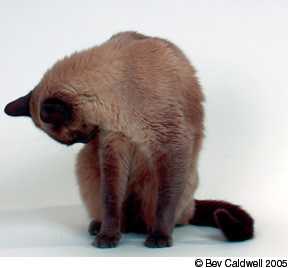Hairballs. Those yucky wads of gooey mess that cats upchuck. Youve awakened to the sounds of your cat heaving. Perhaps even stepped on a hairball when getting out of bed. Found them in the dining room as you pulled out a chair to sit down and eat.

288
As disconcerting as finding a hairball is, upchucking one is equally as disconcerting to your cat and potentially damaging to her digestive system. Cats are fastidious creatures, and as they groom themselves, they ingest loose, dead hair with their rough tongues. Most hair passes naturally through a cats digestive system and is expelled when the cat defecates.
Hairballs Can Be Dangerous
If too much hair accumulates in the stomach instead of passing into the intestines, the cat will heave and retch until she vomits the hairball, leaving the gooey mass for you to find. If hairballs are bad enough, they can cause complete obstructions, says Francis Kallfelz, DVM, PhD, James Law professor of Veterinary Nutrition at Cornell Universitys College of Veterinary Medicine.
Cats suffer from hairballs to a varying degree. One of the first signs of hairballs is vomiting food, says Drew Weigner, DVM, board certified by the American Board of Veterinary Practitioners, whose practice is The Cat Doctor in Atlanta, Georgia.
Obviously, if you live with a Sphynx, the virtually hairless breed of cat, hairballs wont be an issue. But a cat with short hair may upchuck hairballs just as often or more often than a cat with long hair. Cats vary like people do, says Dr. Kallfelz, and if the cat is eating a diet with low residue so they dont defecate as much, hairballs will probably increase for them.
The Inside Fix
Traditionally, administering hairball remedies, laxatives or petroleum jelly were the primary ways to grease your cats skids and keep the hair moving. Hairball remedies and petroleum jelly are intestinal lubricants and effective in managing hairballs, says Dr. Weigner.
In recent years, however, pet food manufacturers have developed diets that target hairballs and help keep them from forming. To prevent hairballs, a cats diet should produce more bulk to the intestines, so increasing your cats intake of fiber and moisture will help. If you add more fiber in the diet and increase water in the digestive system, it moves hair along, says Dr. Kallfelz.
Increased bulk keeps hair moving along a cats digestive tract, so most hairball foods aid in that process by adding cellulose, a nondigestible, natural vegetable powdered fiber that increases bulk and causes the intestines to retain more water. As a result, hair moves through a cats system faster. If you increase intestinal bulk, your cat generates more stools, says Dr. Kallfelz. If there is more moisture in the intestines that doesnt get absorbed – and your cat is generating more stools – those factors will help rid your cat of any hair she licks. A cats hair globs together if it is eating a diet where the water is absorbed, says Dr. Kallfelz.
Although hairball foods help hair move through the intestines, they do not aid in hair moving from the stomach – which is where they often get stuck – into the intestine, so a hairball diet may not eliminate hairballs entirely. Hairball foods usually generate more stools. Feeding a hairball diet to a healthy cat is no problem, and hairball foods are nutritionally sound. Hairball foods usually increase nutrient density, says Dr. Weigner, to replace what has been displaced by the addition of fiber.
If your cat upchucks hairballs more than one or two times a month, discuss with your veterinarian the possibility of adding a hairball food to your cats diet. Your veterinarian can help you make the right choice. You may want to provide hairball-prevention food in addition to your cats regular food – rather than replace her food entirely – or add hairball treats. Dont feed hairball diets to cats under the age of six months.
Other Ways to Hinder Hairballs
In addition to providing hairball food for your cat, these other methods may help. Brush your cat regularly with a slicker brush to eliminate loose hair. A standard brush may simply gloss over your cats coat and leave the excess hair trapped in it. If your cat still gets hairballs, you may want to consider more drastic coat maintenance measures. Sometimes shaving a cat helps, says Dr. Weigner.
Give your cat a hairball remedy or a hairball remedy treat. They have a crusty shell on the outside and are filled with a hairball paste inside. Hairball remedies are available in pet stores.
Provide plenty of fresh water and change it daily to keep your cat drinking. Place bowls of water at various places around the house. To entice your cat to drink more, try one of the automatic pet fountains available in pet stores or on the Internet.



